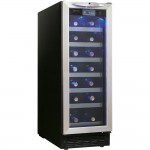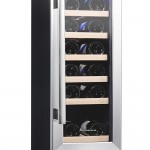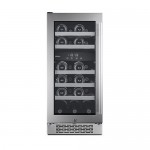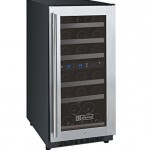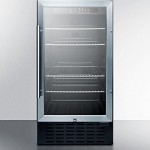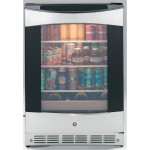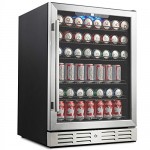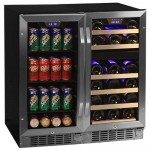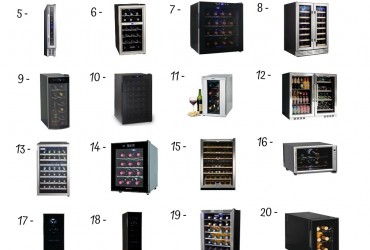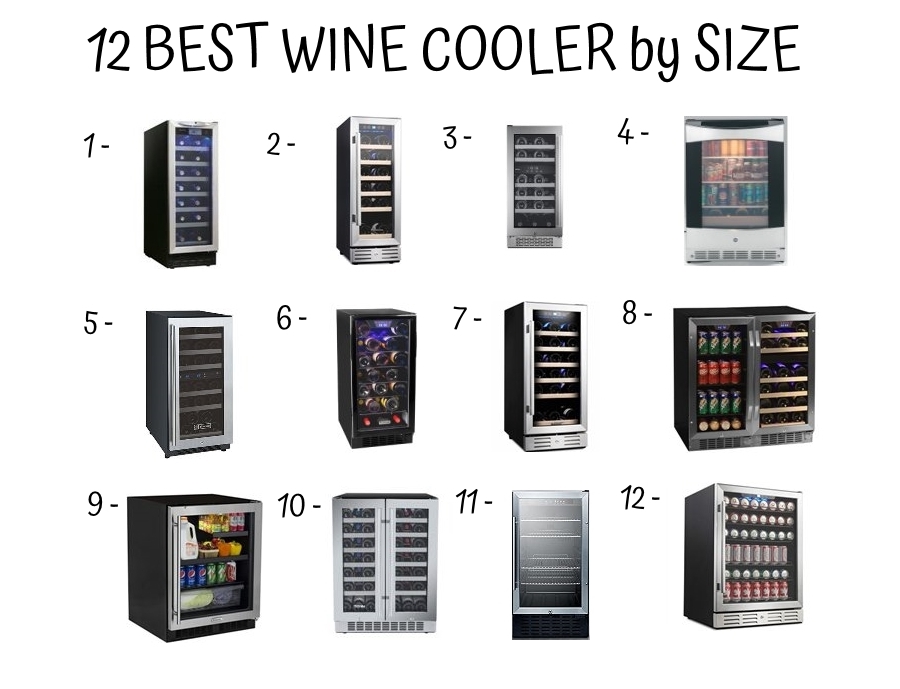
Wine coolers come in various sizes from small, 3- or 4-bottle units with small footprint to full size, 80 or more bottle capacity models. What wine cooler maker deserves the No. 1 spot on this list? Choose up your favorites!
- Danby DWC276BLS 27-Bottle Silhouette Wine Cellar – Black/Stainless
- Kalamera 12” Wine refrigerator 18 Bottle Built-in or Freestanding with Stainless Steel & Double-Layer Tempered Glass Door and Temperature Memory Function
- Avallon 23 Bottle 15″ Dual Zone Built-In Wine Cooler – Left Hinge
- GE PCR06BATSS Profile 24″ 5.3 Cu. Ft. 12 Bottle Capacity Stainless Steel Undercounter Beverage Center
- Allavino VSWR30-2SSRN – 30 Bottle Dual-Zone Wine Refrigerator – Towel Bar Handle
- Koldfront 30 Bottle Built-In Single Zone Wine Cooler – Black
- Kalamera 15” Wine Cooler 30 Bottle Built-in or Freestanding with Stainless Steel & Double-Layer Tempered Glass Door and Temperature Memory Function
- Edgestar 26 Bottle + 80 Can Side-by-Side 30″ Wide Wine & Beverage Center
- Marvel MA24BRG3RS ADA Beverage Refrigerator with MaxStore Crisper, Door with Lock, 24-Inch, Stainless Steel
- Titan 24 Inch Built-in Dual Zone French Door Wine Refrigerator
- Single Zone Wine Refrigerator
- Kalamera 24″ Beverage Refrigerator 175 Can Built-in or Freestanding Single Zone Touch Control
If you’re buying several bottles of wine per year that costs hundreds of dollars (if not more) that you plan on letting age, chances are you already know how to properly store them — whether or not they taste better than the bottle you brought to the last housewarming party you attended. But if your palette lies somewhere between Andre and Krug, and you’ve been wondering if a wine fridge is worth the investment, we’ve got some tips for you.
Are you serving or storing?
First, we’re not talking about cellars, walk-in cabinets, or other options for serious collectors. Maybe you just bought a case of wine during a recent trip to your favorite vineyard and want to know if you can just leave it in the box. Maybe.
As long as you’re not turning it into an investment and you keep it a cool, dry place, it might be okay. However, a cardboard box might not be ideal. Storing wine on its side keeps liquid in contact with the cork, which is important if it’s made from wood, and you don’t want to subject it to wild temperature swings.
“Wine is a living thing,” Dena Doiron, office manager at wine fridge manufacturer KingsBottle, told Digital Trends. “It has an active chemical process going on, and like most chemical processes, the cold inhibits that activity and heat excites it.”
Whether you’re storing red or white, 55 degrees Fahrenheit (about 12.8 degrees Celsius) is often cited as the most desirable temperature. Because the fridge where you store food should be below 40 degrees Fahrenheit (4 degrees Celsius), you don’t want to store bottles in there for very long.
Why a wine fridge?
Wine fridges often have a temperature range between 39 and 65 degrees Fahrenheit (3.9 and 18.3 degrees Celsius). If you’re considering purchasing one, your first choice is between a thermoelectric model and compressor model. Wine fridges without compressors are less expensive — you can get a countertop version of one on Amazon for as low as $108 — and generally hold fewer bottles.
“They’re great for stabilizing temperature if you’re in a hot environment, but they’re also highly influenced by the ambient temperature, because they don’t have a compressor,” says Doiron. Thermoelectric fridges use semiconductors, like you find in computers, to cool. As electrical current flows through the device, it conducts heat from one side to the other, making one side hot and the other cold.
Compressor fridges are just like the full-sized models you have in your kitchen, meaning they need fans and coolants to operate. While thermoelectric fridges lack the vibrations caused by a compressor — a bonus for wine, which you want to keep as still as possible to avoid stirring up sediment — they can’t get nearly as cool as regular fridges.

